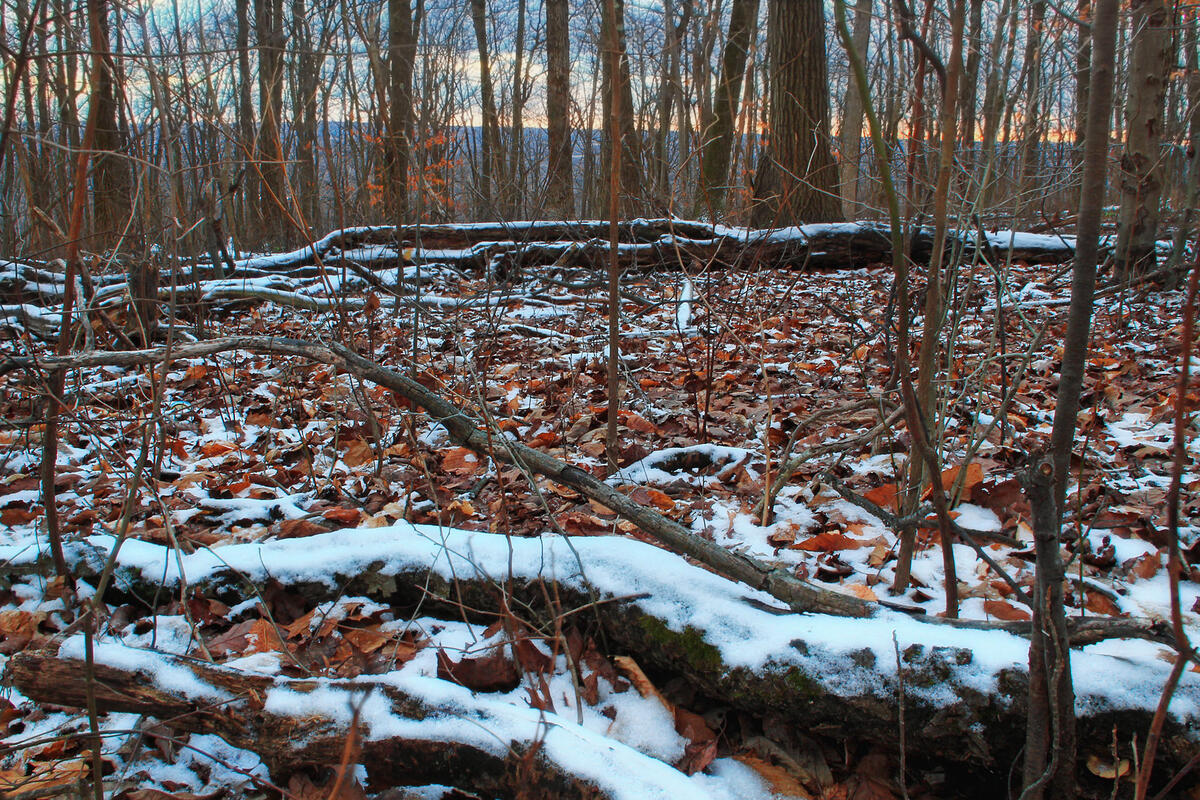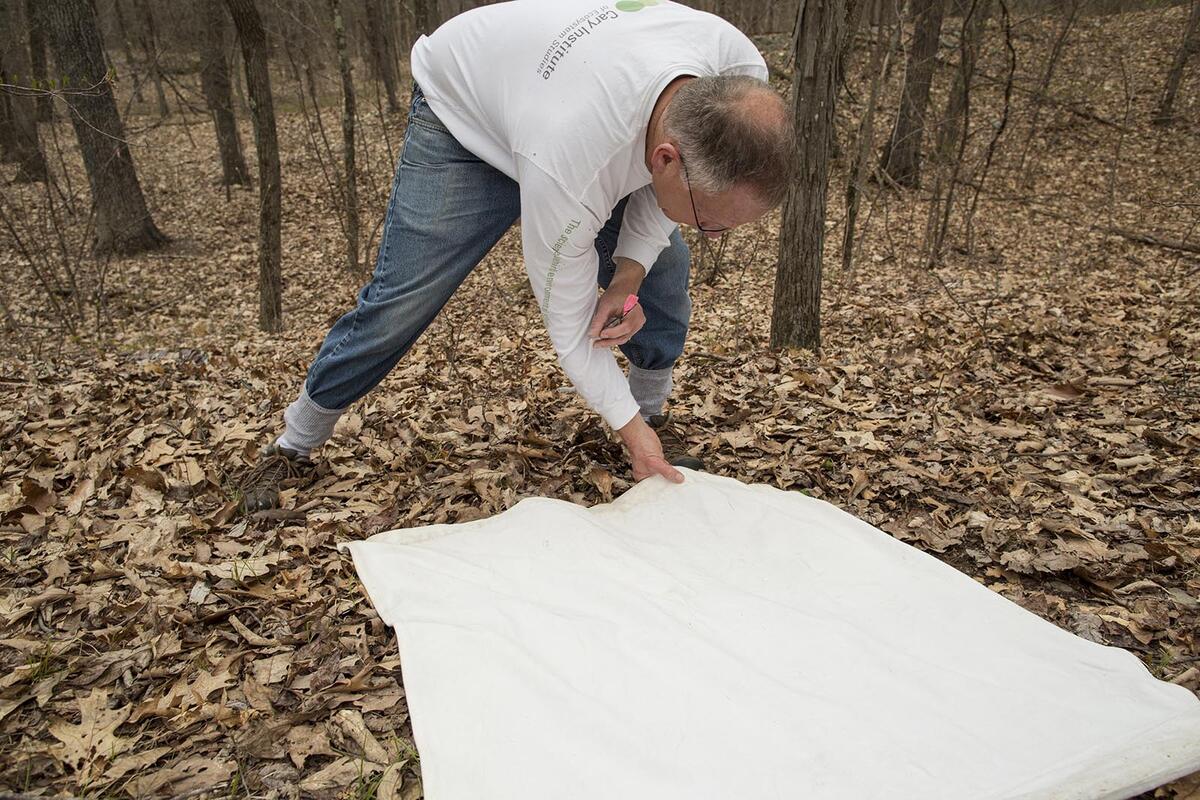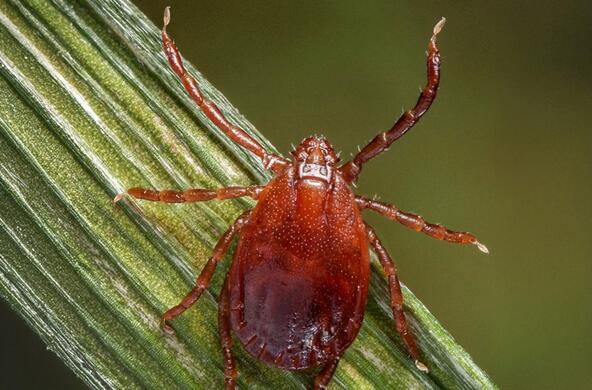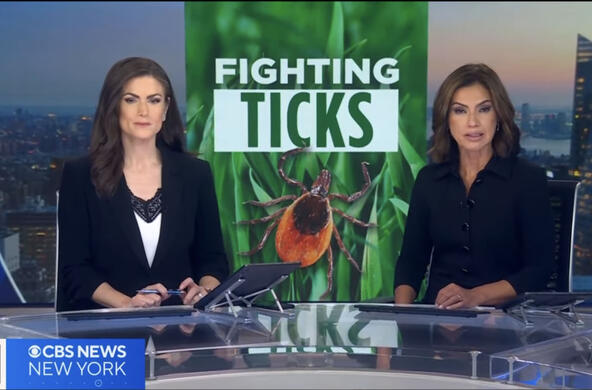Cary scientist Richard Ostfeld is an expert on the ecology of Lyme and other tick-borne diseases. By understanding the factors that influence tick abundance and infection, Ostfeld and his team can predict when and where exposure to tick-borne diseases will be high. Below, he fields some questions we’ve received about winter tick encounters in the Northeast.
Do you have a question? Drop us an email at quillenl@caryinstitute.org.
I went on a New Year's hike, and pulled several ticks off myself and my dog. I thought winter was when I didn’t have to worry about tick-borne disease. What’s going on? They looked like adult blacklegged ticks.
It would not be surprising if the ticks you encountered on New Year’s Day were adult blacklegged ticks. In this species, the adults are the largest stage but still only the size (and roughly the shape) of a sesame seed. Adult blacklegged ticks become active in the fall, when they climb up vegetation to seek an animal host, including us and our dogs. When fall or winter weather goes below freezing, the ticks become inactive and hunker down under the leaf litter for protection. But during warm spells even in mid winter they can re-activate, which was apparently what happened in your situation. As warm spells in winter become more frequent or prolonged with climate change, we can expect risk of tick-borne disease to increase, even in seasons when we’ve historically been relatively safe.

Are other tick species active in the winter in New York State?
I don’t think there is as much research on winter activity of other tick species, such as American dog ticks and lone star ticks, in New York State. In my own experience, I have not encountered either of these two species on warm winter days when blacklegged ticks are active. This is an important question deserving more attention.
Do cold winters kill ticks, or do they just go dormant?
We have been monitoring the abundance of blacklegged ticks on our sites at the Cary Institute for over 30 years and have asked whether the abundance of nymphs in spring and summer correlates with temperatures (both the average and extremes) during the previous winter. We have found no relationships, suggesting that winter coldness does not reliably kill the overwintering stages of ticks. Overwintering larval and adult ticks appear to be able to escape cold conditions by finding protected spots and going dormant.
Where do they go when they are dormant?
The question of where ticks go when they’re dormant is deceptively hard to answer. It’s not possible to collect ticks when they’re dormant with the usual techniques, like dragging a cloth. When researchers place ticks in small nylon mesh bags on the surface of the ground, the ticks typically don’t survive winter very well. But if ticks are placed in soil cores that allow them to get under leaf litter or into soil pores, they survive better. In these spots the ticks are protected from desiccation as well as extreme temperatures. So the evidence points to them crawling down under protective layers of leaves or soil during both winter cold and summer heat.

Are ticks likely to be worse in the spring if the winter is mild? Do cold temperatures kill their eggs?
Two of the life stages of the blacklegged tick are typically active in the spring. One of these stages consists of the adults that failed to find a blood meal host the prior fall. These are the ones that come out when winter temperatures are at least several degrees above freezing and then again seek a host when things warm up in March or April. By May or so, almost all these adult ticks that haven’t found a host use up their nutritional reserves and die. The other stage is the nymph, which in our area become active in May through July. We have found evidence that the nymphs activate earlier in warmer years, coming out up to a few weeks earlier than in colder years. This can catch folks by surprise if they assume that danger starts in, say, late May or June. We have not found evidence that the total abundance of nymphs is higher after a mild winter.
As for tick eggs, this stage is the least well-studied, so little is known about what might kill them before they hatch. The eggs hatch into larvae, so if cold snaps reliably killed eggs, we would expect abundance of larvae to be reduced after cold winters, but we do not see evidence of this.
Can I stop worrying about ticks when there is snow cover on the ground?
The impact of snow cover on host-seeking activity by ticks has not been well studied. When I go crashing around in the woods when there’s snow on the ground, I do not encounter ticks. I assume that the snow is a barrier to tick movement upwards from the ground onto vegetation, but I have no direct evidence for this.
Have earlier springs, later falls, and milder winters led to a longer ‘tick season’ in our region?
Blacklegged ticks do require relatively warm temperatures in order to seek a host, and they go dormant when those temperatures are not experienced. Some evidence from northeastern North America suggests that the earlier springs and later winters we are experiencing with climate change are providing the ticks with a longer period during which they can seek a host. Because the ticks starve to death if they don’t find a host, these longer host-seeking periods are likely to support tick population growth and invasion into areas that were previously too cold. When tick populations thrive and spread, so too does the risk of human exposure to the pathogens they carry.








